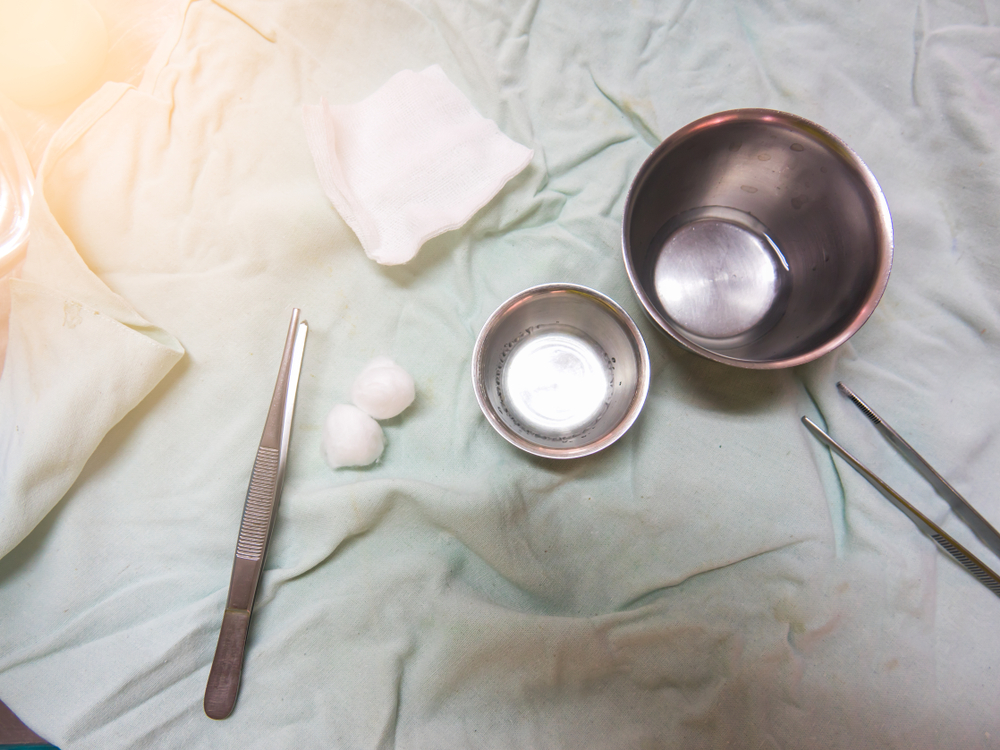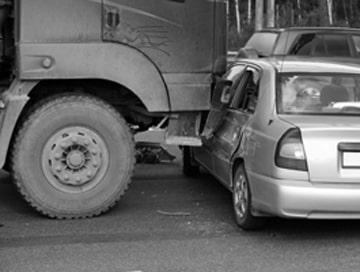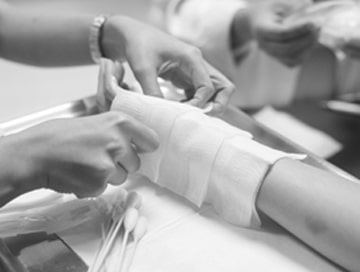
Imagine a scenario where an accident leads to a degloving injury, a term often heard but not fully understood. What is degloving?, and how does it impact individuals? In Fresno, California, accidents can happen unexpectedly, and being informed about degloving injuries is crucial. This article will delve into the meaning of degloving, explore its various forms, and discuss the legal implications associated with such injuries.
What is Degloving?
Degloving refers to a traumatic injury where a layer of skin and tissue is separated from the underlying structures. This separation can occur on any part of the body, but most commonly affects the hands, fingers, feet, and toes. The severity of a degloving injury depends on the depth and extent of the tissue damage, with deeper degloving requiring extensive reconstructive surgery and potentially leading to permanent functional limitations.
Forms of Degloving Injuries:
Understanding the types of degloving injuries is crucial for both legal and medical perspectives. Each type has its own set of challenges and implications. Here are some common forms:
Hand Degloving:
Hand degloving, often resulting from workplace accidents or machinery mishaps, can have life-altering consequences. Victims may face challenges in performing daily tasks, impacting their overall quality of life.
Finger Degloving:
Finger degloving injuries, typically caused by accidents involving rings or machinery, can lead to permanent damage. The intricate structure of the fingers makes recovery challenging.
Foot Degloving:
Degloving injuries affecting the foot can result from various accidents, such as car crashes or industrial incidents. These injuries often require extensive medical intervention and rehabilitation.
Within the different forms of degloving, we can categorize the types in 3 different groups:
- Partial Degloving: This involves separation of only the superficial layers of skin. While painful and requiring medical attention, partial degloving usually heals well with minimal scarring.
- Full-Thickness Degloving: This affects all layers of skin and underlying tissue, including muscles, tendons, and nerves. Full-thickness degloving demands immediate medical intervention and extensive reconstructive surgery, often resulting in permanent scarring and potential functional limitations.
- Avulsion Degloving: This is the most severe type, where the entire skin and underlying structures are ripped away from the bone. Avulsion degloving requires complex surgical procedures and often leads to significant permanent disabilities.
Recognizing the Warning Signs: Symptoms of Degloving Injuries
The severity of degloving injuries varies widely, and the symptoms you experience will depend on several factors, including the type and depth of the injury, whether it’s open or closed, and the specific area affected. However, recognizing the common warning signs is crucial for seeking immediate medical attention, which can significantly improve the chances of successful recovery.
Open Degloving Injuries: A Gruesome Picture
Open degloving injuries are the most severe type and present with a graphic and alarming set of symptoms:
- Extreme pain: The exposed nerve endings in the raw tissue cause excruciating pain, often described as a burning or tearing sensation.
- Deep lacerations or open wounds: The skin is ripped away, revealing the underlying structures like muscle, tendons, bone, and even nerves.
- Exposed bone, muscle, tendons, nerves, and/or connective tissue: These deeper layers are usually not visible under normal circumstances, making their exposure a clear sign of a serious degloving injury.
- Severe blood loss: Extensive tissue damage often leads to profuse bleeding, which can be life-threatening if not controlled promptly.
- Total or partial skin separation: The skin is either completely ripped away or partially detached from the underlying structures.
- Tissue death: The lack of blood supply to the exposed tissue can lead to necrosis, or tissue death, requiring surgical removal of the affected area.
- Shock: The body’s response to such severe trauma can trigger shock, characterized by symptoms like rapid heart rate, shallow breathing, and confusion.
Closed Degloving Injuries: A Hidden Threat
While not as graphic as open degloving, closed degloving injuries can still be serious and require medical attention. The symptoms are often less obvious but should not be ignored:
- Pain: Although the pain might be less intense than with open degloving, it can still be significant due to the internal damage.
- Bruising and skin discoloration: The injured area may appear bruised and discolored due to internal bleeding and tissue damage.
- Swelling: Significant swelling around the affected area is a common symptom of closed degloving.
- Tenderness: The injured area will be extremely tender to the touch, indicating underlying tissue damage.
- Dry, cracked skin: The compromised blood supply to the skin can lead to dryness and cracking.
Swift Action is Key
Remember, degloving injuries are medical emergencies, and prompt medical attention is essential to minimize tissue damage and improve the chances of successful recovery. If you or someone you know experiences any of these symptoms, do not hesitate to call emergency services immediately. Early diagnosis and treatment can make a significant difference in the outcome of a degloving injury.
Treatment Options
Dealing with degloving injuries requires a comprehensive approach that addresses both the immediate medical needs and the long-term consequences. Understanding the available treatments, their economic implications, and seeking timely intervention can significantly impact the recovery process.
Immediate Medical Response:
- Emergency Care:
In cases of open degloving injuries, immediate emergency care is essential. This involves controlling bleeding, cleaning and covering the exposed area, and administering pain management. Swift action is crucial to prevent further complications and increase the chances of successful treatment.
- Surgical Intervention:
Surgical procedures are often a necessity for degloving injuries, especially in cases where skin, muscle, or tissue needs to be reattached. Reconstructive surgery aims to restore the affected area and minimize the aesthetic and functional impact of the injury.
The specific procedures, however, vary greatly depending on the type and severity of the injury.
- Partial Degloving: For less severe cases, the focus is on cleaning the wound, stitching the separated skin back in place, and preventing infection.
- Full-Thickness Degloving: This typically involves complex microsurgery to reattach severed nerves, tendons, and blood vessels. Skin grafting from undamaged areas might be necessary to cover exposed tissue. According to a study published in the Journal of Hand Surgery, the average cost of skin grafting can range from $5,000 to $15,000 per procedure.
- Avulsion Degloving: The most severe cases often require extensive reconstructive surgery, including bone grafting, tendon transfers, and even amputation in extreme situations. A 2018 study in the Archives of Facial Plastic Surgery estimated the average cost of facial degloving reconstruction to be around $60,000.
- Wound Management:
Both open and closed degloving injuries require meticulous wound management to prevent infection and promote healing. Dressings, antibiotics, and regular monitoring are crucial components of the ongoing care plan.
Long-Term Treatment and Rehabilitation:
- Physical Therapy:
Rehabilitation plays a pivotal role in the recovery journey. Physical therapy helps restore mobility, functionality, and strength to the affected area. This step is crucial for individuals to regain independence in their daily lives.
- Psychological Support:
Face and hand degloving injuries, in particular, can have profound psychological impacts. Emotional support and counseling may be necessary to address mental health challenges and help individuals cope with the aftermath of such traumatic events.
Economic Consequences of Treatment:
- Medical Expenses:
The economic ramifications of degloving injuries extend beyond the immediate medical expenses. Surgical procedures, hospital stays, medications, and rehabilitation contribute to a substantial financial burden on individuals and their families.
According to a study by the National Center for Biotechnology Information (NCBI), the average cost of treating severe degloving injuries can range from $50,000 to $150,000, depending on the extent of the injury and the required interventions.
- Lost Productivity:
The recovery period for degloving injuries can be lengthy, resulting in significant time away from work. Lost wages and decreased productivity can have lasting economic consequences for both individuals and their employers.
The Bureau of Labor Statistics reports that occupational injuries, including those leading to degloving, contribute to billions of dollars in annual workers’ compensation costs, affecting both employers and the overall economy.
- Legal Considerations:
Seeking compensation through legal channels becomes crucial in mitigating the economic impact of degloving injuries. Experienced personal injury lawyers, like those at Kuzyk Law, can help victims navigate the legal complexities and secure the financial resources needed for comprehensive treatment and recovery.
For many victims, the financial burden of degloving treatment can feel overwhelming. However, options exist to help alleviate the pressure:
- Health Insurance: Exploring the coverage provided by your health insurance plan is crucial. Most plans cover at least some portion of the treatment costs.
- Workers’ Compensation: If the injury occurred at work, workers’ compensation may cover medical expenses and lost wages.
- Personal Injury Lawsuits: If negligence caused the injury, seeking legal counsel to explore compensation options could be beneficial.
Causes of Degloving Injuries in Fresno:
Degloving can be caused by various accidents and incidents, including:
- Machinery and Equipment: Entanglement in industrial machinery, farming equipment, or power tools can result in severe degloving injuries.
- Motor Vehicle Accidents: High-impact car crashes, motorcycle accidents, and collisions with bicycles or pedestrians can all cause degloving to the limbs.
- Crush Injuries: Being crushed by heavy objects or caught between colliding surfaces can lead to degloving on any part of the body.
- Burns: Severe burns can cause deep tissue damage that resembles degloving skin.
What to Do If You’ve Suffered a Degloving Injury: A Practical Guide to Immediate Actions
Discovering that you or someone you know has suffered a degloving injury can be a harrowing experience. In such critical moments, swift and informed action is crucial to ensure the best possible outcomes. Here’s a comprehensive guide on what steps to take if you suspect a degloving injury.
1. Seek Immediate Medical Attention:
If you suspect a closed degloving injury or, unmistakably, an open degloving injury, the first and most urgent step is to seek immediate medical attention. Time is of the essence, and prompt intervention can significantly impact the prognosis and overall recovery.
According to medical experts, closed degloving injuries can be particularly challenging to diagnose accurately. Therefore, heading to the emergency room is imperative for a thorough assessment and timely initiation of appropriate treatment.
2. Document the Incident:
As soon as it is safe to do so, document the circumstances surrounding the degloving injury. Take photos or make detailed notes about the accident, location, and any contributing factors. This documentation may prove invaluable if legal action becomes necessary later on.
3. Follow Medical Advice and Treatment Plans:
Once under medical care, diligently follow the advice and treatment plans outlined by healthcare professionals. This may involve surgeries, wound care, physical therapy, and psychological support. Compliance with medical recommendations is crucial for optimal recovery.
4. Consult with Legal Professionals:
Given the severe nature of degloving injuries and their potential economic consequences, consulting with legal professionals becomes a vital step. Knowledgeable personal injury attorneys, like those at Kuzyk Law, specialize in handling cases related to degloving injuries. They can provide guidance on the legal options available and assist in pursuing compensation for medical expenses, lost wages, and other damages.
Determining the Value of a Degloving Claim:
The value of a degloving claim is influenced by various factors:
- Location and Severity:
The part of the body affected and the severity of the degloving injury play a significant role in determining its value. Injuries to more critical areas may result in higher compensation.
- Repairability:
Assessing whether the degloved injury is repairable is a crucial factor. Repairable injuries may entail additional medical expenses and impact the overall claim value.
- Visibility of Scars:
The visibility of scars left by the injury is another consideration. Highly visible scars may contribute to a higher claim value, reflecting the potential impact on the individual’s self-esteem and mental well-being.
- Required Medical Care and Healing Outcome:
The extent of required medical care, the healing outcome, and any long-term consequences influence the overall value of the degloving injury claim.
- Impact on Daily Activities and Work:
A key factor in assessing the value of a degloving injury claim is the extent to which it affects the individual’s ability to perform daily activities and work. This consideration accounts for both current and future challenges.
Get Support from Kuzyk Law for Degloving Injuries
Facing the challenges of a degloving injury? Kuzyk Law specializes in guiding you through the complexities, securing compensation for medical expenses and lost wages. With a proven record in Fresno, we’re ready to be your advocates for justice. Contact us at Kuzyk Law to schedule a free consultation, ensuring you have the support you need to move forward confidently. Time is crucial, and we’re here to fight for your rights and fair compensation—let Kuzyk Law stand by you in seeking justice.













